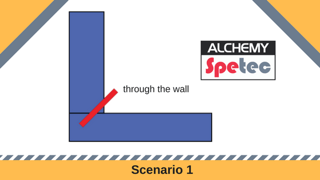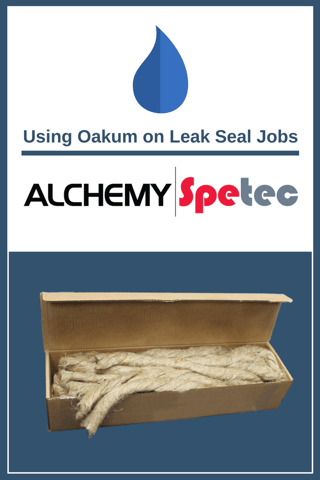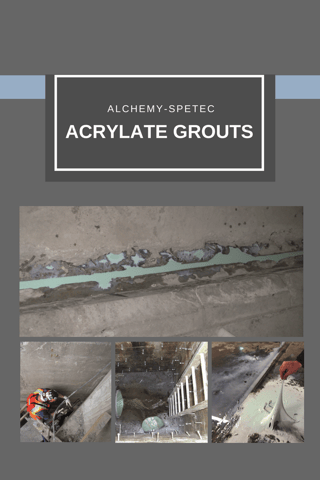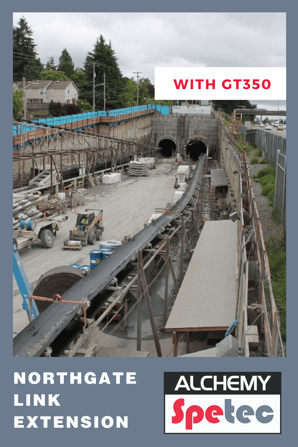
Infiltration of ground water into storm and waste water systems is a huge issue for many municipalities. This earlier blog article on the subject is an excellent resource.
 As Andy Powell states in his post:
As Andy Powell states in his post:
Aging sewer and storm water systems across the country are plagued by infiltration and inflow; especially in areas with high water tables and sandy soils. Over time, compacted soils around catch basins, manholes, and culverts relax and result in deflection of joints and pipe connections. The end result is infiltration of ground water into the storm and waste water systems. This infiltration erodes the soils surrounding below grade drainage structures resulting in sinkholes, settling roadways, and property damage; not to mention the extra cost of treating that uninvited ground water.
But luckily there is a solution:
The solution is a combination of sealing leaking joints both from within the drainage structures and through point grouting from street level. Expansive polyurethanes such as Spetec F400, Spetec F1000, AP Seal 500, Spetec H100 and AP Fill 700 produced by Alchemy-Spetec can be injected directly into pipe and manhole connections where they react with infiltrating water and expand to seal off leaking joints. Additional point grouting from street level fills voids and permeates loose soils. This relieves hydrostatic pressure from the structures and strengthens the ground to support the above roadways and sidewalks.





.png?width=320&name=Curtain%20Wall%20Grouting-blog%20(3).png) Curtain wall grouting is a leak seal method that is often required when cracks cannot be identified, when walls are made of material that does not respond well to crack injection (such as masonry, stone and CMU), and when previous leak seal methods have failed.
Curtain wall grouting is a leak seal method that is often required when cracks cannot be identified, when walls are made of material that does not respond well to crack injection (such as masonry, stone and CMU), and when previous leak seal methods have failed. 

 In this scenario the floor has been poured first before a wall is made to confine a space. To fix leaks that occur in this type of joint, a hole is drilled at the bottom of the wall. This is usually about 6-8 inches above the floor and at a 45 degree angle. Once drilled, soaked oakum is then placed in the hole. Once cured, the oakum serves as a gasket and initial leak seal. Polyurethane grout is then pumped into the hole for a deeper seal, while the oakum gasket prevents it from spilling back out.
In this scenario the floor has been poured first before a wall is made to confine a space. To fix leaks that occur in this type of joint, a hole is drilled at the bottom of the wall. This is usually about 6-8 inches above the floor and at a 45 degree angle. Once drilled, soaked oakum is then placed in the hole. Once cured, the oakum serves as a gasket and initial leak seal. Polyurethane grout is then pumped into the hole for a deeper seal, while the oakum gasket prevents it from spilling back out.-1.png?width=320&name=floor%20wall-%20blog%20(1)-1.png) In this scenario the wall has been poured first before the floor. The hole is drilled on the floor about 6-8 inches from the wall and at a 45 degree angle. Soaked oakum is placed into the hole to create an initial seal and gasket. Polyurethane grout then injected behind it for a thorough leak seal solution.
In this scenario the wall has been poured first before the floor. The hole is drilled on the floor about 6-8 inches from the wall and at a 45 degree angle. Soaked oakum is placed into the hole to create an initial seal and gasket. Polyurethane grout then injected behind it for a thorough leak seal solution.
 Hydrophobic polyurethanes naturally repel water (similar to the way oil would repel water and stay separate if you were trying to mix them in a glass). These products push water out of the area in question as they expand. Hydrophobics are used with catalysts which allow you to adjust the set time. They also have zero shrinkage after curing.
Hydrophobic polyurethanes naturally repel water (similar to the way oil would repel water and stay separate if you were trying to mix them in a glass). These products push water out of the area in question as they expand. Hydrophobics are used with catalysts which allow you to adjust the set time. They also have zero shrinkage after curing.



 Northgate Link Extension with GT350
Northgate Link Extension with GT350
 Alternately, oakum can be soaked in
Alternately, oakum can be soaked in 
 Acrylates were introduced in the early 80s to the waterproofing industry as a less toxic alternative to
Acrylates were introduced in the early 80s to the waterproofing industry as a less toxic alternative to 
 What Can You Do?
What Can You Do?

